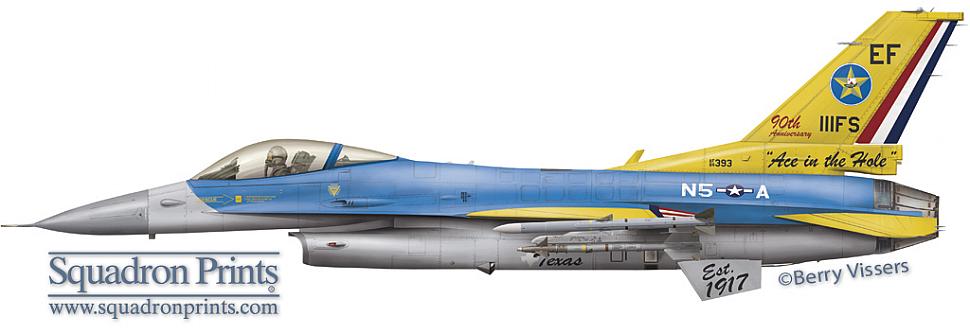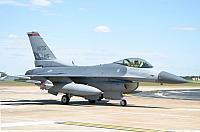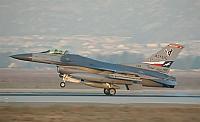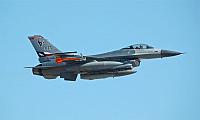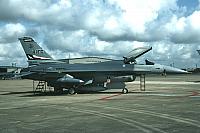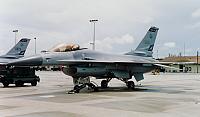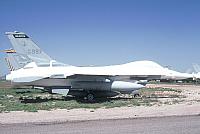 |
111th Fighter Squadron ( USAF ANG)" Ace in the Hole" |
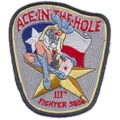 |
111 FS " Ace in the Hole" ( USAF ANG) | |||
| Status: |
Converted
|
|||
| Version: | F-16C/D block 25 | |||
| Role: | Air Defense, Attack | |||
| Tailband: | Blue & Red & White (Texas Flag) | |||
| Motto: | N/A | |||
| Badge: | N/A | |||
|
Converted to the MQ-1B Predator on June 7th, 2008.
|
||||
F-16 History
On the first of December 1989 the 111th FIS started receiving block 15 aircraft to replace their F-4Ds. The last F-16 arrived in April of 1990. In 1992, only a few years following the acceptance of their block 15s, they converted to the ADF variant of the block 15. On March 15th, 1992 the 111th FIS was redesignated the 111th FS. Also in 1992 the 111th FS celebrated their 75th anniversary. To commemorate this F-16A ADF #82-1001 was painted in special markings including a big Texas flag panted on the fuselage underside.
During September of 1995, the 111th FS ended it's alert detachment at Holloman AFB, New Mexico. Detachment one started in 1979 in New Orleans with the F-101 Voodoo. In 1985 the detachment was moved to Holloman AFB, New Mexico where it operated the F-4 followed by the F-16.
In late 1996 the 111th started to retire their ADF F-16s to AMARC. To replace these aircraft the squadron received the block 25. Transition started in September of 1996 and was completed by February of 1997. This brought a change in role which officially happened in October of 1998. The role went from air-to-air to an air-to-ground mission. After returning from an Operation Southern Watch mission in 2000, the squadron added Precision Guided Munitions to its arsenal.
On the day of September 11th, 2001 when President Bush boarded Air Force One and flew from Florida to Nebraska, the 111th FS flew air cover for his aircraft. This is notable as President Bush was a 111th FS pilot in the 1970s. Shortly after in December of 2001 the 111th FS deployed to Atlantic City, New Jersey and flew Operation Noble Eagle missions over New York City, Philadelphia and Washington DC, once again guarding the President.
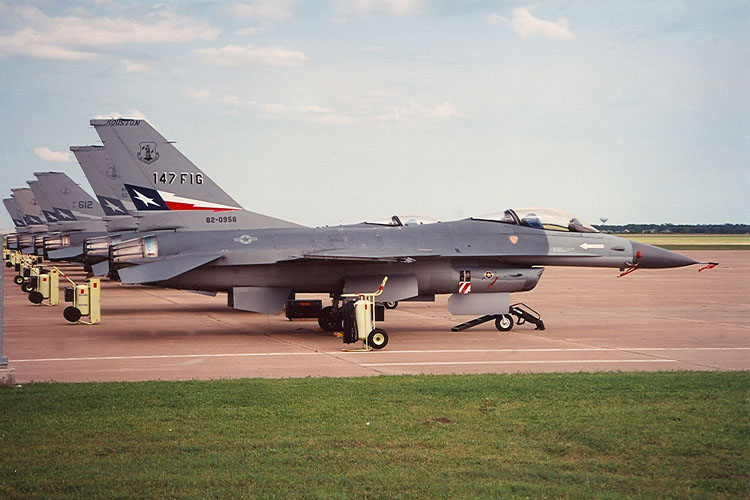
During the 2005 Base Realignment and Closure Commission, it was recommended that the F-16 block 25s be retired. Texas Governor, Rick Perry, reacted quickly and made sure the unit could remain alive and did so by securing MQ-1 Predator operations. This is an unmanned aircraft and although not exactly what the 111th FS had hoped for, it would keep the unit going well into the future.
Pilots of the 111th FS are very experienced and this was demonstrated when Colonel Jeffrey S. 'CAG' Smiley passed 4,000 hours in the F-16. It was especially noteworthy as it occurred during an Operation Iraqi Freedom combat mission. Colonel Smiley had just passed the 3,000 hour mark only five years earlier. Another milestone was passed during this deployment when F-16C #84-1254 passed 6,000 flight hours earlier on September 4th, 2005, also during an Operation Iraqi Freedom mission.
In October of 2007 the 111th FS painted F-16C #84-1393 (side profile noted above) with special markings to commemorate the squadrons 90 years of history. Markings were chosen to match the color scheme applied to their first aircraft, the JN-4 Jenny which the squadron first flew in 1923. These colors consisted of intense blue and yellow with red, white and blue rudder and flaps. Although these colors are the most eye catching, less noticeable colors and markings were used to represent other eras. World War Two markings were represented with that era's style of stars and bars on the fuselage. The unit emblem that was placed on the tail represents the Korean War years when the squadron flew the F-84. The belly was painted gray to represent the modern aircraft paint schemes.
As was earlier planned in 2005, the 111th FS gave up it's last two F-16s on June 7th, 2008 and F-16 operations drew to a close. The MQ-1 replaced the F-16 and the parent wing was renamed the 147th Reconnaissance Wing that same month.
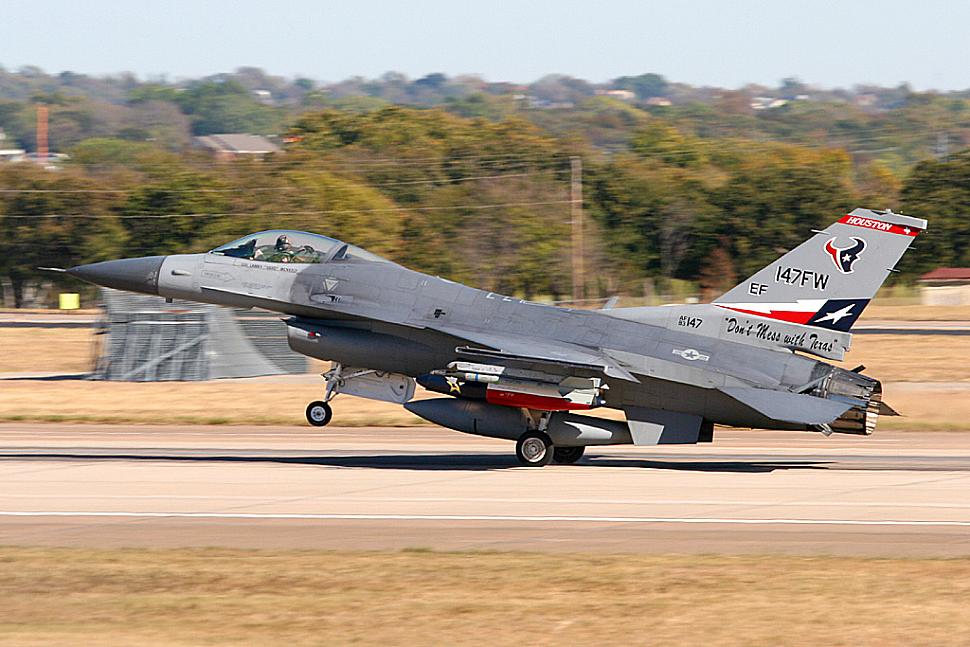
Aircraft Markings History
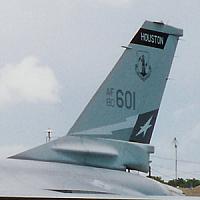
The tailband is black with the letters Houston in the same color as the jet. Near the base of the tail was a stylized Texas flag.
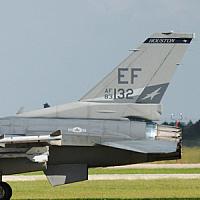
Although the markings were similar to what was carried on the F-16A/B, an 'EF' tail code was adopted which stands for Ellington Field. To make room for the tailcode, the serial number was lowered and placed slightly over the flag. Some of the aircraft do wear a red tailband instead of low-viz. Later on more and more of the regular squadron Vipers received high-viz markings.
Unit History
- 1917: Activation of the squadron in Kelly Field, Texas
- 1917: No aircraft assigned
- 1919: Disbanded
- 1923: Activation of the squadron in Ellington Field, Texas
- 1923: JN-4B/H 'Jenny' (part of 36 ID)
- 1923: JN-4B/H 'Jenny' (Houston MAP, Texas)
- 1928: O-2
- 1931: O-38
- 1938: O-43
- 1942: A-20B 'Havoc' (part of 68 OG, Daniel Field, Georgia)
- 1942: A-20B 'Havoc' (multiple bases in the African Theatre)
- 1943: P-39L 'Airacobra' (part of 68 RG, multiple bases in the African and European Theatre)
- 1943: P-51A/D 'Mustang'
- 1944: P-51A/D 'Mustang' (part of 68 TRG)
- 1945: P-51A/D 'Mustang' (part of 69 TRG)
- 1947: P-51D 'Mustang' (Ellington Field, Texas)
- 1950: F-84E 'Thunderjet' (part of 136 FBG)
- 1951: F-84E 'Thunderjet' (Itazuke AB [Jap.])
- 1952: F-84E 'Thunderjet' (Taegu AB [S. Kor.])
- 1952: F-51H 'Mustang' (Houston MAP, Texas)
- 1955: F-80C 'Shooting Star'
- 1955: F-80C 'Shooting Star' (Ellington AFB, Texas)
- 1957: F-86D 'Sabre'
- 1958: F-86D 'Sabre' (part of 147 FIG)
- 1959: F-86L 'Sabre'
- 1960: (T)F-102A 'Delta Dagger' (part of 147 TFW)
- 1971: F-101B/F 'Voodoo'
- 1981: F-4C 'Phantom II'
- 1987: F-4D 'Phantom II'
- 1989: F-16A/B 'Fighting Falcon'
- 1992: F-16A/B 'Fighting Falcon' (part of 147 FW)
- 1996: F-16C/D 'Fighting Falcon'
- 2008: Converted
Deployments
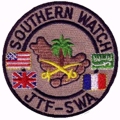 |
' Southern Watch' |
| Ahmed Al Jaber AB, Kuwait [6 F-16s] (1998) | |
| Operation Southern Watch was an operation which was responsible for enforcing the United Nations mandated no-fly zone below the 32nd parallel in Iraq. This mission was initiated mainly to cover for attacks of Iraqi forces on the Iraqi Shi’ite Muslims. | |
 |
' Southern Watch' |
| Prince Sultan AB, Saudi Arabia (October of 2000 to November 15th, 2000) | |
| Part of a 'Rainbow' package and took two aircraft. The other squadrons involved were the 119th FS and the 134th FS. Operation Southern Watch was an operation which was responsible for enforcing the United Nations mandated no-fly zone below the 32nd parallel in Iraq. This mission was initiated mainly to cover for attacks of Iraqi forces on the Iraqi Shi’ite Muslims | |
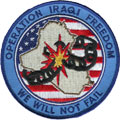 |
' Iraqi Freedom' |
| Balad AB, Iraq (August of 2005 to October of 2005) | |
| Flew 462 sorties with an amazing fact that no sorties were cancelled due to maintenance. As noted above in the F-16 history in more detail is Colonel Jeffrey S. 'CAG' Smiley milestone of passing 4,000 hours in the F-16 during an Operation Iraqi Freedom mission. | |
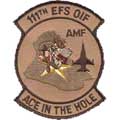 |
' Iraqi Freedom' |
| Balad AB, Iraq (January 19th, 2007 to May 18th, 2007) | |
| Flew 348 sorties and again flew a perfect mission effectiveness with no flights cancelled due to maintenance. Operation Iraqi Freedom was initiated in March of 2003 to drive Saddam Hussein from reigning Iraq. Over the next years, multiple units where tasked to perform air cover over Iraq in the wake of this war. |
F-16 Airframe Inventory
- All 111 FS F-16s in our F-16 Aircraft Database (past and current aircraft)
- Current 111 FS F-16s in our F-16 Aircraft Database
Photos
Please use this form to add any list any error or omissions you find in the above text.
Note: your comments will be displayed immediately on this page. If you wish to send a private comment to the webmasters, please use the Contact Us link.

